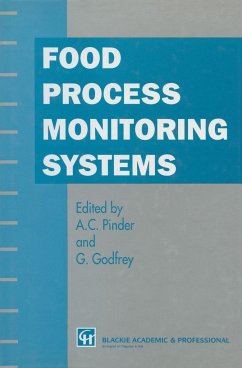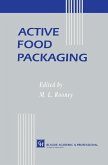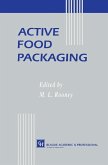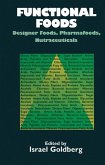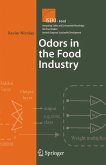1 Introduction.- 2 Fluorescence cytometry for the rapid analysis of food microorganisms.- 2.1 Introduction.- 2.2 Optical analysis.- 2.2.1 Flow cytometry.- 2.2.2 Confocal scanning cytometry.- 2.3 Light sources for optical cytometry.- 2.4 Parameters measurable by optical techniques.- 2.4.1 Fluorescent labelling techniques.- 2.5 Research studies.- 2.5.1 Identification of bacteria by light scatter and nucleic acid staining.- 2.5.2 Identification of bacteria by immunofluorescent labelling.- 2.6 Routine use of flow cytometry in quality assurance.- 2.6.1 Analysis of fruit preparations.- 2.6.2 Analysis of milk products.- 2.6.3 Starter culture analysis.- 2.6.4 Shelf life prediction in salads and fruit juice manufacture.- 2.7 Conclusions.- References.- 3 Infrared spectroscopic methods.- 3.1 Introduction.- 3.2 Infrared spectroscopy.- 3.2.1 Infrared spectrometers.- 3.2.2 Approaches to sampling.- 3.2.3 Quantification.- 3.3 Instrumentation for process monitoring and control.- 3.3.1 Selective-wavelength instruments.- 3.3.2 FT-IR instruments.- 3.3.3 Dispersive instruments.- References.- 4 Machine vision for the food industry.- 4.1 Introduction.- 4.1.1 Customers judge food by its appearance.- 4.1.2 Human vision versus machine vision.- 4.2 Machine vision systems.- 4.2.1 Image formation.- 4.2.2 Non-visual sensing methods.- 4.2.3 Image acquisition.- 4.2.4 Image processing.- 4.2.5 Image analysis.- 4.2.6 Image interpretation and understanding.- 4.2.7 Current machine vision systems.- 4.3 Considerations for use of machine vision systems.- 4.3.1 Practical implications in using machine vision systems.- 4.3.2 Economic considerations in using machine vision.- 4.3.3 Environmental protection and safety.- 4.4 Machine vision applications for the food industry.- 4.4.1 Introduction.- 4.4.2 Shape and size.- 4.4.3 Region labelling and object segmentation.- 4.4.4 Appearance of product.- 4.4.5 Texture.- 4.4.6 Non-visual imaging techniques.- 4.4.7 Object segmentation using colour.- 4.4.8 Process monitoring and control.- 4.4.9 High level techniques for machine vision.- 4.4.10 Future applications of machine vision systems.- References.- 5 Particle sizing.- 5.1 Introduction.- 5.2 Particle sizing within the food processing industry.- 5.2.1 Sieving.- 5.2.2 Sedimentation.- 5.2.3 Optical microscopy.- 5.2.4 Electrozone sensing.- 5.2.5 Laser light scattering methods.- 5.3 Low angle laser light scattering (LALLS).- 5.3.1 Introduction.- 5.3.2 Theory.- 5.3.3 Material refractive indexes.- 5.3.4 Concentration range.- 5.3.5 Data analysis.- 5.3.6 Criteria for a minimum sample.- 5.3.7 Minimum sample volume assessment.- 5.3.8 Sample dilution.- 5.3.9 Results.- 5.4 Sub-micron particle sizing.- 5.4.1 Principle of operation.- 5.4.2 The analysis problem.- 5.4.3 Results.- 5.4.4 Required practice for PCS measurements.- 5.5 Measurement of mobility and zeta potential.- 5.5.1 Introduction.- 5.5.2 Measurement method.- 5.5.3 Applications.- References.- 6 Ultrasonic methods.- 6.1 Introduction.- 6.2 Principles of ultrasonic wave propagation.- 6.2.1 General principles.- 6.2.2 Pure materials.- 6.2.3 Multi-phase media.- 6.2.4 Summary.- 6.3 Measurement of ultrasonic properties.- 6.3.1 Introduction.- 6.3.2 Practical considerations.- 6.3.3 Technique to measure phase velocity and attenuation in liquids and dispersions.- 6.3.4 Double-liquid technique for measurement of velocity difference.- 6.3.5 Measurement of group velocity in liquids and dispersions.- 6.3.6 Summary of techniques available.- 6.4 Applications to food systems.- 6.4.1 Overview of methods used on foods and related materials.- 6.4.2 Velocity measurements.- 6.4.3 Attenuation measurements.- 6.4.4 Other ultrasonic applications.- 6.5 Future developments.- References.- 7 Mass spectrometry.- 7.1 Introduction: basic principles.- 7.2 Basic definitions.- 7.3 Ion analysis.- 7.3.1 Magnetic sector mass spectrometers.- 7.3.2 Quadrupole mass spectrometers.- 7.3.3 Time-of-flight mass spectrometers.- 7.3.4 Ion storage mass spectrometers.- 7.4 Detection ...
Bitte wählen Sie Ihr Anliegen aus.
Rechnungen
Retourenschein anfordern
Bestellstatus
Storno

